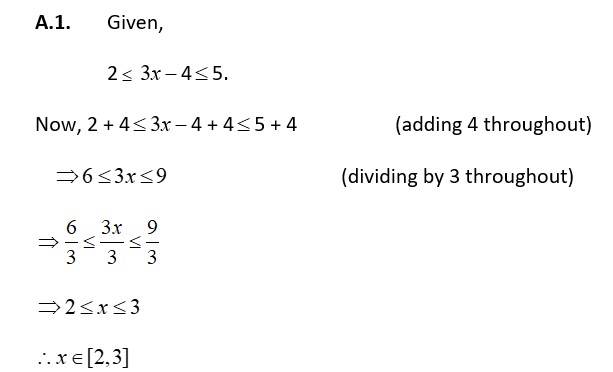Maths
Get insights from 6.5k questions on Maths, answered by students, alumni, and experts. You may also ask and answer any question you like about Maths
Follow Ask QuestionQuestions
Discussions
Active Users
Followers
New answer posted
6 months agoContributor-Level 10
The equation of the family of hyperbolas with the centre at origin and foci along the x-axis is:

Differentiating both sides of equation (1) with respect to x, we get:
Again, differentiating both sides with respect to x, we get:
Substituting the value of in equation (2), we get:
This is the required differential equation.
New answer posted
6 months agoContributor-Level 10
The equation of the family of ellipses having foci on the y-axis and the centre at origin is as follows:

Differentiating equation (1) with respect to x, we get:
Again, differentiating with respect to x, we get:
Substituting this value in equation (2), we get:
This is the required differential equation
New answer posted
6 months agoContributor-Level 10
The equation of the parabola having the vertex at origin and the axis along the positive y-axis is:

Differentiating equation (1) with respect to x, we get:
Dividing equation (2) by equation (1), we get:
This is the required differential equation.
New answer posted
6 months agoContributor-Level 10
18. We can write the given statement as
If n = 1, we get,
P(1): 1 < (2k + 1)2= 1< (3)2
= 1 <
Which is true.
Consider P(k) be true some positive integer k
1+ 2 + …. + k< (2k + 1)2 (1)
Let us prove P(k +1) is true.
Here,
(1 + 2 +…. k)+ (k +1) < (2k + 1)2+ (k +1)
By using (1),
So, we get,
< {2k+ 3}2
< {2(k +1) +1}2
(1 + 2 + 3 + … + k) + (k + 1) < (2k +1)2+ (k
New answer posted
6 months agoContributor-Level 10
The centre of the circle touching the y-axis at origin lies on the x-axis.
Let (a, 0) be the centre of the circle.
Since it touches the y-axis at origin, its radius is a.
Now, the equation of the circle with centre (a, 0) and radius (a) is

Differentiating equation (1) with respect to x, we get:
Now, on substituting the value of a in equation (1), we get:
This is the required differential equation.
New answer posted
6 months agoContributor-Level 10
Given: Equation of the family of curves
Differentiating both sides with respect to x, we get:
Again, differentiating with respect to x, we get:
Adding equations (1) and (3), we get:
This is the required differential equation of the given curve.
New answer posted
6 months agoContributor-Level 10
95. Let y = x2 + 3x + 2
So, (differentiation w r t 'x')
(Again “ “ ) = 2
Taking an Exam? Selecting a College?
Get authentic answers from experts, students and alumni that you won't find anywhere else
Sign Up on ShikshaOn Shiksha, get access to
- 65k Colleges
- 1.2k Exams
- 679k Reviews
- 1800k Answers

